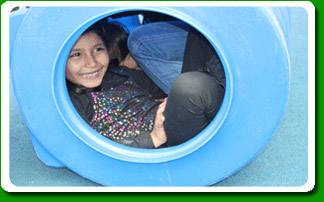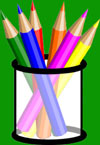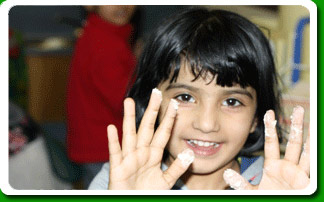ACTIVITIES FOR YOUR CHILD

There are lots of ways you can help your child at home. Every day simple tasks can prove to be highly educational when you are talking to and helping your child. This will ensure your child is ready for learning and will be able to achieve their potential.
Reading with your child is a very important and enjoyable activity. Even before they are ready to read your child will benefit from looking at the pictures in a book while you read to them. If you feel that you are not a confident reader it is equally as valuable to look at the pictures and talk about all the different things you can see on the page. It is fun to look at the pictures and discuss what you think might happen later on in the story. Simple traditional nursery rhymes and stories are popular and help your child to begin to appreciate rhythm. When your child begins to bring books home you can help their progress by sitting and reading with them, talking about what they are reading and why they enjoy a particular story or rhyme.
Helping with basic number skills is a lot easier than you might think! Simple counting and sorting activities can begin when your child is very young. Learning to count at school is helped by practising counting at home. Make it fun! When you are going shopping notice all the numbers all around you; door numbers, numbers on car registration plates, the price of things in the shops. Look for colours and shapes in and around the house. There are shapes all around us – point out the different ways they can be used, upside-down triangles, squares turned on their corners, different tiling patterns. Most children enjoy baking and you can help your child to learn to measure things at home using standard units by looking at litres, grams etc on bottles and packets in the kitchen.

CHECK OUT OUR - 'TO DO AT HOME' - RANGE OF ACTIVITIES
Download and Print our colouring books below to colour in over the holidays.
Try our alphabet lessons and animal shapes with Dot to Dot.
MAKE YOUR OWN PLAYDOUGH

This is a lovely activity to do with your child at home. Make some dough by mixing two cups of plain flour, one cup of salt, 1&¾ cups of water and one table spoon cooking oil, one tablespoon cream of tartar and a few drops of food colouring. Cook in the microwave for 5 minutes, stirring every minute. This dough will store in a plastic container in the fridge. It is safe for children to play with and is too salty for them to want to eat! Fun things to do with the dough include making numbers 1 – 5, ask your child if they can make their own age. Can they make different letters and simple 2D shapes?. Use pastry shapes to cut shapes from your playdough. Make playdough animals and faces. The options are endless.